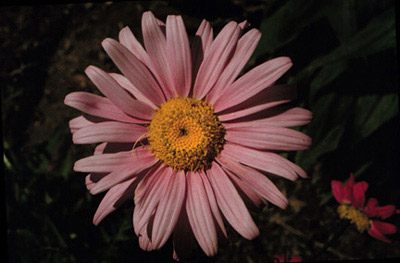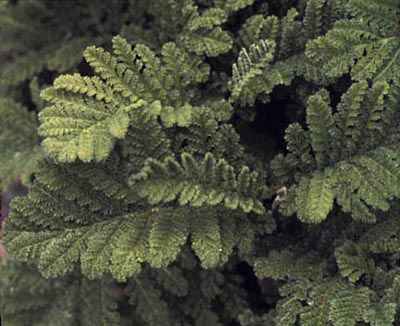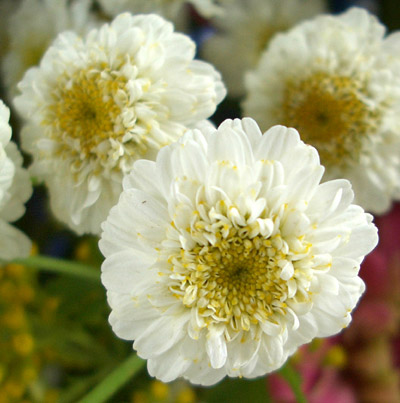| Home | Start key | Fact sheets | Glossary | Common flowers | ||
Tanacetum L.Asteraceae (Anthemideae tribe) |
||||||||||||||||||||||||
Alternate trade names
feverfew, matricaria, chrysanthemum, tansy Common names
feverfew, tansy Species cultivated
Tanacetum parthenium (L.) Schultz-Bip. (=Chrysanthemum parthenium (L.) Bernh.; Matricaria capensis hort.) (feverfew) T. vulgare L. (=C. vulgare (L.) Bernh.) (tansy) possibly T. coccineum (Willd.) Brierson (painted daisy). Origin
Europe to southwest Asia. Brief characterization
Mostly aromatic plants with glabrous to densely hairy, usually deeply pinnatifid to pinnately or bi-pinnately dissected leaves; leaflets or lobes toothed or scalloped; upper stem leaves reduced, less dissected; corymbs bearing numerous, usually discoid, button-shaped heads, generally 1-2.5 cm across, of flowers (florets); phyllaries in 3-4 series, frequently with scarious margins; pappus a short crown. Cultivar and/or species variation
Heads most often discoid, or with short ray florets; Tanacetum coccineum has long ray florets and heads to 8 cm across. Heads white, yellow, pale yellow, or bicolor yellow/white. May be confused with
Dendranthema (florists' chrysanthemum), particularly the pom pon types, which are fully double heads in which the ray florets have been bred to be disc florets. Differences between Tanacetum and Dendranthema:
Countries exporting
Kenya. |
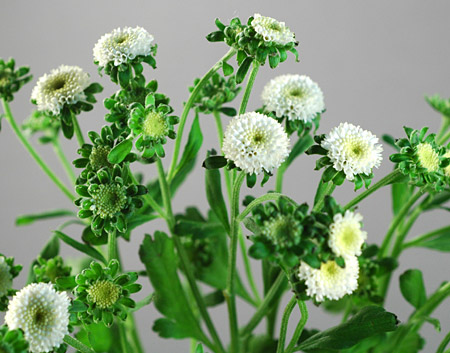
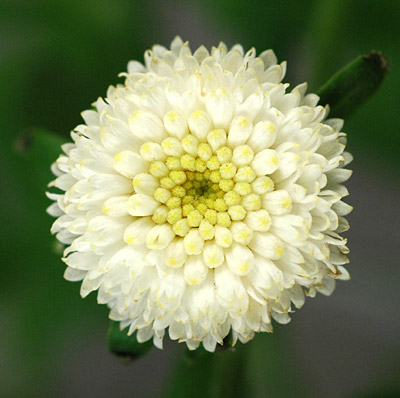
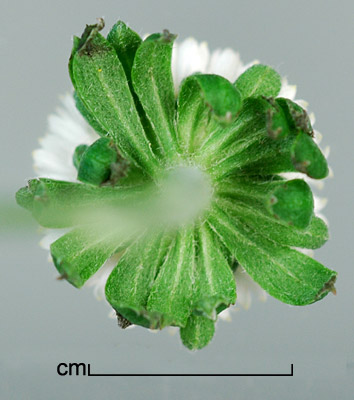
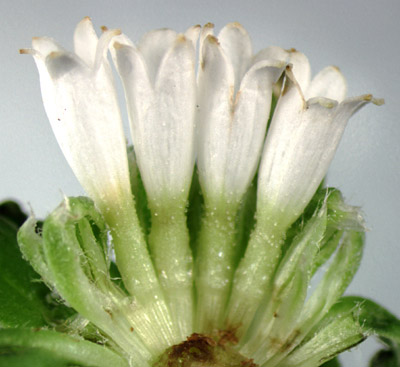
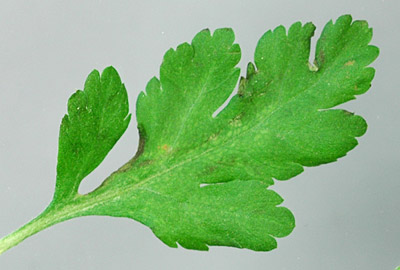
 |
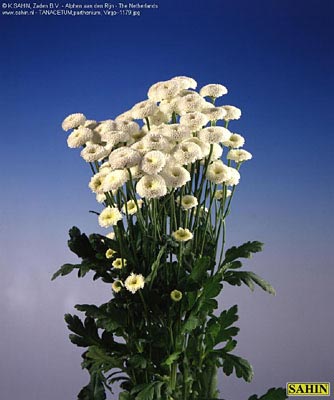 |
|
| Tanacetum parthenium
Photo: © California Cut Flower Commission |
Tanacetum parthenium 'Virgo'
Photo: © K. Sahin, Zaden B.V. |

